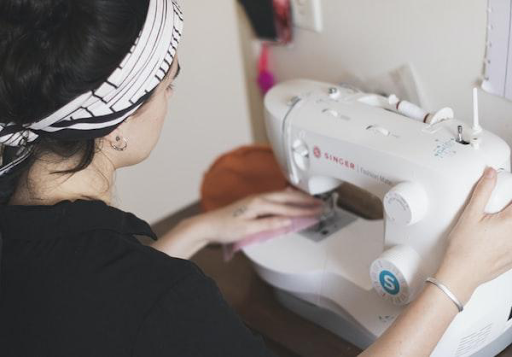Applique is a quilting technique in which fabric designs are added to the quilt top after the quilt is pieced together. Applique quilts can be made using a variety of methods, including needle-turn applique, fusible applique, and machine applique. Keep reading to learn more about applique and quilting.
The Applique Quilting Technique
Applique is a quilting technique in which shapes or designs are cut from one or more pieces of fabric and then sewn onto the background fabric. It is a creative way to add interesting designs to your blanket or quilt project, and it is relatively easy to do. If you’re a beginner quilter, there are several online resources that offer applique quilt patterns and tutorials to guide you through the different techniques.
Appliqued quilts can be made with any type of fabric, but often feature brightly-colored pieces against a light background. Applique is a great way to use up scraps of fabric or repurpose old clothing items and reduce textile waste.
The Different Types of Applique
Applique quilts can be made using a variety of methods, including traditional hand applique, machine applique, and fusible web applique.
In traditional hand applique, the shapes or designs are cut from fabric and then sewn to the background fabric by hand. In machine applique, the shapes or designs are cut from fabric and then sewn to the background fabric by machine. In the fusible web method, the shapes or designs are cut from fabric and then sewn to the background fabric using a fusible web adhesive.
The advantage of using a fusible web adhesive is that it eliminates the need for any stitching around the edges of the shapes or designs. This makes it much easier to achieve a neat finished edge.
Tips for Appliqueing a Quilt
There are some general tips that you should follow when appliqueing a quilt:
- Make sure that the applique fabric is at least two inches larger than the area that you will be appliqueing it to. This will ensure that there is enough fabric to work with, and will also help to prevent the fabric from puckering.
- Use a stabilizer when appliqueing a quilt. A stabilizer will help to keep the fabric in place, and will also prevent it from stretching.
- When appliqueing a quilt, use a small, sharp needle. This will help to prevent the fabric from bunching up.
- It’s important to use a thimble for any sewing project. This will help to protect your fingers from the needle.
- Applique the fabric in reverse. This will help to prevent the fabric from fraying.
Finally, make sure that the fabric is securely attached to the quilt top. You can do this by either hand-stitching it in place, or by using a machine.
Machine-Stitching an Applique Quilt Pattern

Machine-stitching is a great way to speed up thWhat Is an Applique Quilt Patterne process of creating an applique quilt pattern. There are a few different ways to do this, but the basic idea is to use the machine to help you create the shape of the applique, and then hand stitch it in place.
First, cut out a template for your applique quilt pattern from cardboard or paper, and then place it on top of your fabric. Use a pencil or other sharp object to trace around the edge of the template. Then, remove the template and cut out the shape from your fabric.
Place the fabric shape in position on your quilt top, and use pins to hold it in place. Thread your sewing machine with thread that matches your fabric, and sew around the traced outline using a straight or zigzag stitch. Be careful not to sew through both layers of fabric; you only want to sew through the top layer.
Once you’ve sewn all around the edge of the design, remove any excess fabric inside of the stitching line using scissors or a seam ripper.
